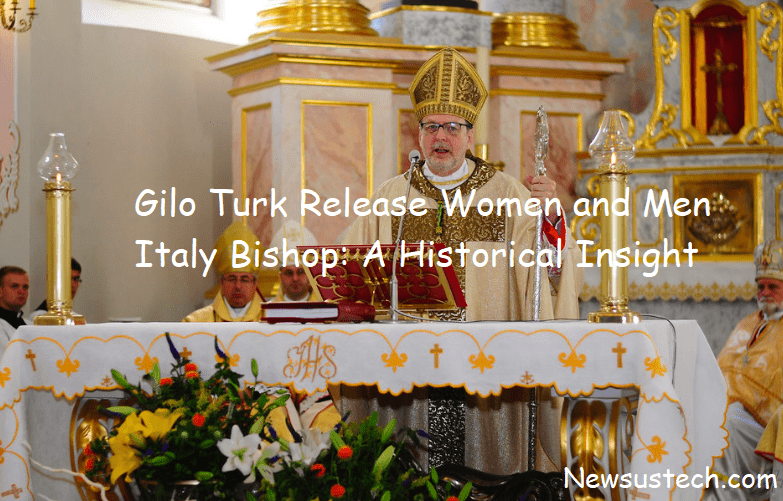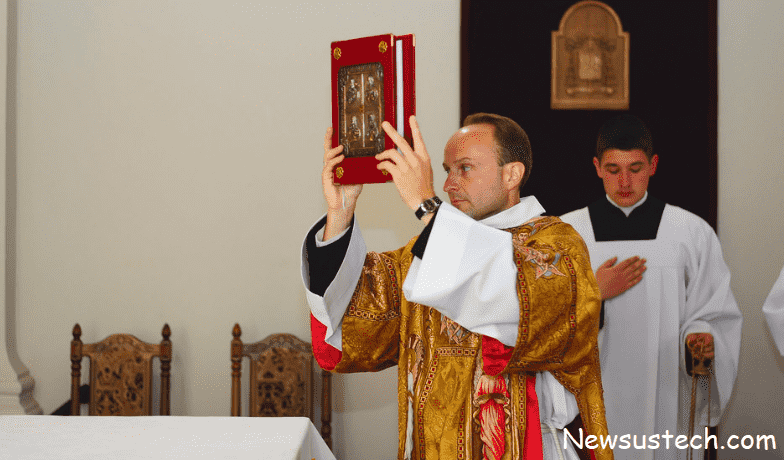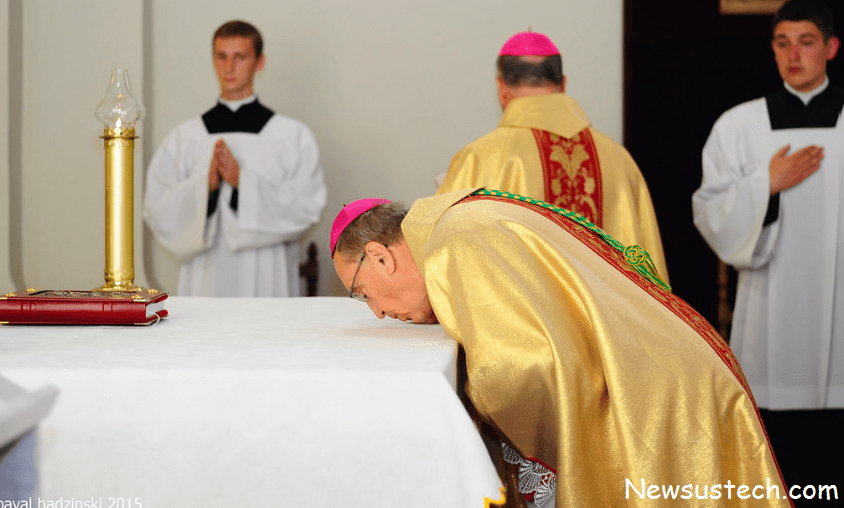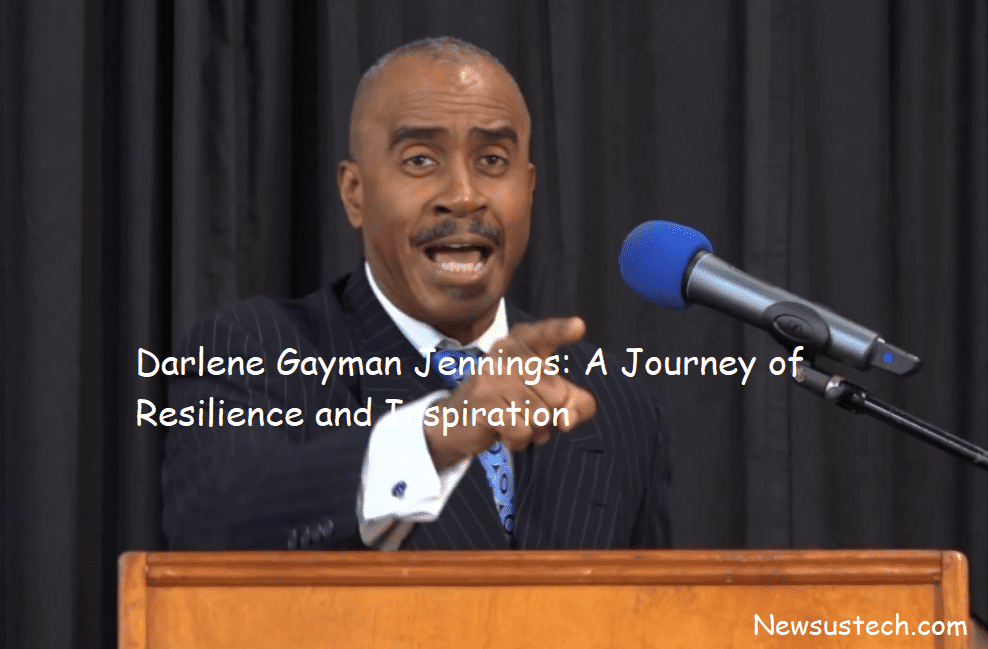Introduction
The concept of freedom, justice, and societal change has always sparked debates throughout history. One such significant chapter that embodies these values is the Gilo Turk Release Women and Men Italy Bishop movement. This historical event didn’t just alter the lives of individuals, but it also resonated with broader societal, religious, and cultural shifts. It was a defining moment in the fight for equality, autonomy, and transformation in Italy.
In this comprehensive blog, we delve into the profound impact that Gilo Turk Release Women and Men Italy Bishop had on Italian society. We will explore its origins, the involvement of key figures, including bishops and community leaders, and how it challenged existing structures of power. This movement is a testament to the indomitable spirit of men and women who fought for their rights and sought liberation from centuries-old conventions.
Through this exploration, we will uncover the lasting legacies of Gilo Turk Release Women and Men Italy Bishop and how it continues to inspire people to stand up for justice and equality today.
Understanding the Gilo Turk Release Movement
The Gilo Turk Release Women and Men Italy Bishop is rooted in the context of social and religious struggles in Italy. During a time when traditional norms dominated, both men and women were often marginalized, with limited opportunities to challenge authority or redefine their roles in society. The movement was initiated by Gilo Turk, a visionary leader who saw the inequalities in his society and sought to address them through coordinated efforts and collaboration with religious figures, including bishops.
At its core, this movement was about liberation. But it wasn’t just about the physical release of individuals; it was about the release of old ideas and stereotypes that had confined people for generations. Women, especially, were given a platform to voice their struggles, while men stood beside them to dismantle patriarchal structures.
The Role of Women in the Movement
One of the most remarkable aspects of the Gilo Turk Release Women and Men Italy Bishop movement was the role women played in shaping its direction. In a time when women had few opportunities to influence societal norms, they became key leaders and symbols of the fight for freedom. The movement allowed women to step out of the shadows and claim a central role in advocating for change.
They weren’t just passive participants; they were organizers, strategists, and vocal leaders who championed equality. The movement became a platform for these women to challenge societal norms and demonstrate their capacity to lead in times of crisis.
Women’s liberation was not just about political or economic rights; it was about changing the perception of gender roles. The Gilo Turk Release Women and Men Italy Bishop movement empowered women to step into spaces traditionally occupied by men, breaking barriers and setting new precedents for future generations.
Men’s Contribution to the Movement
While the Gilo Turk Release Women and Men Italy Bishop is often seen through the lens of women’s liberation, the role men played in supporting this cause is equally important. The movement wasn’t just about fighting for women’s rights but also about redefining what it meant to be a man in a changing society.
Men involved in the movement, particularly those from religious orders and intellectual circles, worked alongside women to challenge the status quo. They understood that true liberation couldn’t be achieved without dismantling the patriarchal systems that oppressed both genders. For many, this meant questioning long-held beliefs about power and privilege and committing to an inclusive vision of equality.
The collaboration between men and women in this movement signaled a powerful shift in societal dynamics, one where mutual respect and cooperation became the foundation of the fight for freedom.
The Role of the Italy Bishop in the Movement
One of the unique aspects of the Gilo Turk Release Women and Men Italy Bishop was the involvement of religious figures, particularly bishops, in the struggle for liberation. In Italy, the church had long held significant power over both public and private life, influencing politics, societal values, and family structures. However, during this movement, certain bishops broke with tradition and aligned themselves with the cause of equality and freedom.
This was a radical departure from the norm. Historically, the church had been seen as a conservative force, one that upheld traditional hierarchies and resisted change. But the bishops who supported the Gilo Turk Release Women and Men Italy Bishop movement recognized that the world was evolving, and that they, too, had a role to play in supporting justice.
These bishops used their influence to advocate for the release of both men and women who had been imprisoned or marginalized due to their activism. Their involvement lent credibility to the movement and showed that the fight for liberation wasn’t just a political cause—it was also a moral and ethical one.
By aligning with the movement, these bishops helped bridge the gap between religious institutions and social activism, demonstrating that faith and justice could work hand in hand.
Key Milestones of the Gilo Turk Release Women and Men Italy Bishop Movement
Over the course of the movement, several key events defined its progress and impact:
- The First Public Demonstration: One of the pivotal moments in the movement was the first public demonstration led by Gilo Turk and supported by women and bishops. This event drew widespread attention and brought the issues of gender inequality and imprisonment to the forefront of public debate.
- The Release of Political Prisoners: A significant victory for the movement came when several political prisoners—both men and women—were released as a result of growing public pressure and advocacy from the church. This marked a turning point, as it signaled that the movement’s efforts were starting to bear fruit.
- The Passage of Progressive Laws: As the movement gained momentum, it also influenced changes in legislation. Laws that had once restricted the rights of women and marginalized groups were reformed, thanks in part to the relentless advocacy of the movement and its allies in the church and government.
- The Expansion of Education and Employment Opportunities: One of the long-lasting impacts of the Gilo Turk Release Women and Men Italy Bishop movement was the expansion of educational and employment opportunities for women. The movement laid the groundwork for future generations of women to pursue careers and education on equal footing with men.
The Lasting Legacy of Gilo Turk and the Movement
The Gilo Turk Release Women and Men Italy Bishop movement had a lasting impact not only on Italian society but on global discussions around gender equality and social justice. Gilo Turk’s leadership and the involvement of both women and bishops in the movement created a model of collaboration that other movements around the world would later adopt.
Today, the values and lessons of the Gilo Turk Release Women and Men Italy Bishop movement continue to inspire activists, scholars, and policymakers who are committed to fighting for a more just and equitable world. The movement’s emphasis on partnership between men and women, as well as the involvement of religious figures, offers a unique example of how societal change can be achieved through cooperation and shared vision.
Conclusion
The Gilo Turk Release Women and Men Italy Bishop movement stands as a powerful testament to the fight for equality, justice, and liberation. It was a movement driven by the collaboration of men, women, and religious figures, all united in their quest for a more just society. The impact of this movement can still be felt today, as it laid the foundation for future generations to continue the fight for gender equality and social justice.
In exploring the Gilo Turk Release Women and Men Italy Bishop movement, we see the strength that comes from unity and the importance of standing up for what is right. As we reflect on its history, we are reminded of the ongoing struggles for freedom and equality in the world today, and the ways in which we can continue to build on the legacy left behind by those who fought before us.
Through the lessons learned from this movement, we can continue to advocate for a more inclusive, just, and equitable world for all.
FAQs:
1. What is the Gilo Turk Release Women and Men Italy Bishop movement?
The Gilo Turk Release Women and Men Italy Bishop movement was a historical movement focused on liberating both women and men from societal and legal inequalities, particularly in Italy. It was led by Gilo Turk with significant support from religious figures like bishops.
2. What role did women play in the Gilo Turk Release Women and Men Italy Bishop movement?
Women played a central role in the movement, acting as leaders, organizers, and strategists. They were at the forefront of advocating for equality and liberation, challenging traditional gender roles.
3. How did bishops contribute to the Gilo Turk Release Women and Men Italy Bishop movement?
Bishops in Italy broke with tradition by supporting the movement, advocating for justice and the release of political prisoners. Their involvement helped legitimize the movement and brought religious support to the cause.
4. What were the key milestones of the Gilo Turk Release Women and Men Italy Bishop movement?
Key milestones included public demonstrations, the release of political prisoners, the reform of progressive laws, and the expansion of educational and employment opportunities for women.
5. What is the lasting legacy of the Gilo Turk Release Women and Men Italy Bishop movement?
The movement’s legacy includes its impact on global gender equality movements and its model of collaboration between men, women, and religious figures. It continues to inspire activism for social justice today.







